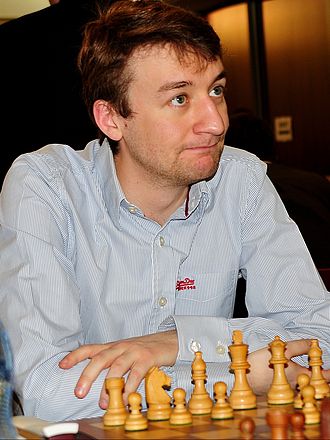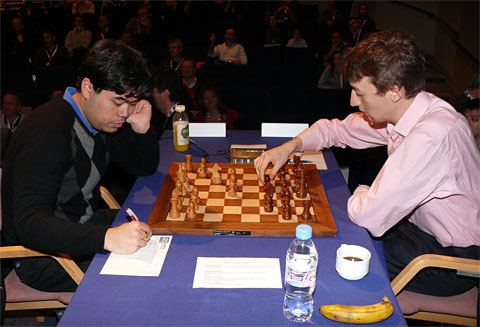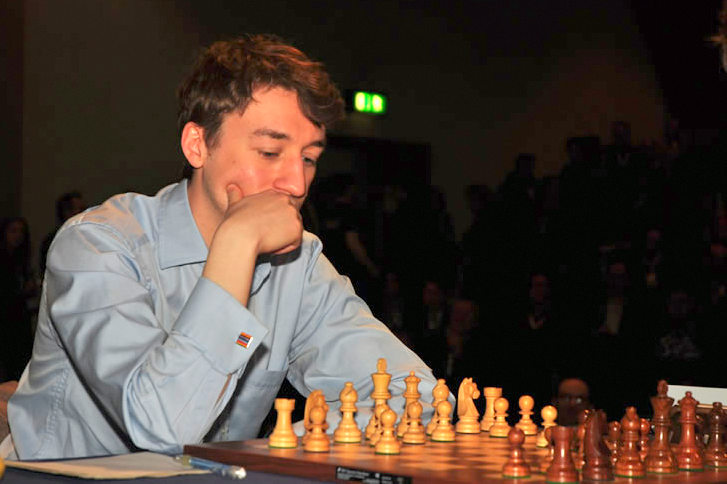The world’s strongest amateur chess player
Currently ranked 61st in the world, Luke McShane has been frequently described as the strongest amateur chess player in the world. The 37-year-old from London entered Oxford University in 2003, where he read philosophy and mathematics at University College. A financial trader, he has managed to stay competitive at the highest echelons of the royal game despite having kept his daytime job.
In an article for The Guardian, Leonard Barden wrote in 2015:
The dearth of amateurs in present-day top chess is no accident. The physical demands of tough tournament schedules and the mental intensity of computer preparation for every game favour the young and those who can approach their games free of external distractions.
 McShane, who left his job and increased his chess activity until he was forced to decline his invitation to the 2011 British Championship when he returned to full-time employment, participated in the first five editions of the London Chess Classic.
McShane, who left his job and increased his chess activity until he was forced to decline his invitation to the 2011 British Championship when he returned to full-time employment, participated in the first five editions of the London Chess Classic.
In 2009, the inaugural edition was advertised as “the highest level chess tournament in London for 25 years”, and the tournament has run uninterrupted until 2019, presenting a mix of professional tournaments and a wide range of subsidiary chess activities.
While most of the eyes were put on Magnus Carlsen in the first editions, McShane was a most welcome presence in the lineup. He only signed one draw in 2009, getting 5th place based on the Bilbao scoring system (3 points for a win, 1 point for a draw), which was in place at the time. True to the spirit of the scoring system, McShane played enterprising chess throughout, which naturally backfired against the likes of Vladimir Kramnik, Michael Adams and Ni Hua. Nonetheless, he received the hefty €10,000 brilliancy prize for his victory over Hikaru Nakamura in round 5.
McShane’s strongest performance came the next year, when the lineup was further strengthened by the presence of Viswanathan Anand. In 2010, the Englishman shared second place with Anand, two points behind Carlsen according to the Bilbao system. Had the normal scoring system been in place, McShane would have tied for first place with Carlsen and Anand. Moreover, he obtained the highest Tournament Performance Rating of the event — a whopping 2838 points thanks to his undefeated performance with wins over Carlsen and Nigel Short!
Final standings - London Chess Classic 2010
|
Nr |
Sd |
Name |
Rating |
Fed |
Score |
TPR |
|
Born |
Tiebreak |
|
1 |
2 |
Carlsen, Magnus |
2802 |
NOR |
13 |
2816 |
|
1990 |
|
|
2 |
1 |
Anand, Viswanathan |
2804 |
IND |
11 |
2815 |
|
1969 |
No tiebreak |
|
3 |
7 |
McShane, Luke J |
2645 |
ENG |
11 |
2838 |
|
1984 |
No tiebreak |
|
4 |
4 |
Nakamura, Hikaru |
2741 |
USA |
10 |
2772 |
|
1987 |
Win over Kramnik |
|
5 |
3 |
Kramnik, Vladimir |
2791 |
RUS |
10 |
2765 |
|
1975 |
Loss to Nakamura |
|
6 |
5 |
Adams, Michael |
2723 |
ENG |
8 |
2725 |
|
1971 |
|
|
7 |
8 |
Howell, David W L |
2611 |
ENG |
4 |
2583 |
|
1990 |
|
|
8 |
6 |
Short, Nigel D |
2680 |
ENG |
2 |
2422 |
|
1965 |
|
Currently, McShane writes a delightful weekly chess column for The Spectator.
Brilliancy prize 2009
Official reporter John Saunders wrote after round 5:
Hikaru never fails to entertain and Luke is once again fully focused on chess, so this was a sure-fire winner as far as the crowd was concerned. Luke decided to stick with his Na6 variation of the King’s Indian Defence with which he lost to Magnus, and his bravery was rewarded, not just with his second win but with the round’s best game prize of 1,000 euros. Well done, Luke, but also credit to Hikaru for a battling performance.
Saunders annotated the game as well.

Bologan: "If you study this DVD carefully and solve the interactive exercises you will also enrich your chess vocabulary, your King's Indian vocabulary, build up confidence in the King's Indian and your chess and win more games."
Final standings - London Chess Classic 2009
|
No. |
Player |
wins |
draws |
losses |
points |
Rating |
Perf. |
|
1 |
Magnus Carlsen |
3 |
4 |
0 |
13 |
2801 |
2839 |
|
2 |
Vladimir Kramnik |
3 |
3 |
1 |
12 |
2772 |
2787 |
|
3 |
David Howell |
1 |
6 |
0 |
9 |
2597 |
2760 |
|
4 |
Michael Adams |
1 |
6 |
0 |
9 |
2698 |
2746 |
|
5 |
Luke McShane |
2 |
1 |
4 |
7 |
2615 |
2606 |
|
6 |
Ni Hua |
1 |
3 |
3 |
6 |
2665 |
2599 |
|
7 |
Hikaru Nakamura |
0 |
6 |
1 |
6 |
2715 |
2644 |
|
8 |
Nigel Short |
0 |
5 |
2 |
5 |
2707 |
2593 | |
Scoring System:
3 - Points per win
1 - Point per draw
0 - Points per loss |
Links
- All ChessBase reports: 2009 | 2010
- Throwback Thursdays:


















 McShane, who left his job and increased his chess activity until he was forced to decline his invitation to the 2011 British Championship when he returned to full-time employment, participated in the first five editions of the London Chess Classic.
McShane, who left his job and increased his chess activity until he was forced to decline his invitation to the 2011 British Championship when he returned to full-time employment, participated in the first five editions of the London Chess Classic. 





